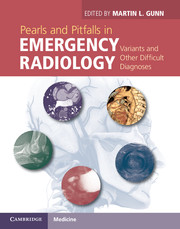Book contents
- Frontmatter
- Contents
- List of contributors
- Preface
- Acknowledgments
- Section 1 Brain, head, and neck
- Section 2 Spine
- Section 3 Thorax
- Section 4 Cardiovascular
- Section 5 Abdomen
- Section 6 Pelvis
- Section 7 Musculoskeletal
- Case 78 Pseudofracture from motion artifact
- Case 79 Mach effect
- Case 80 Foreign bodies not visible on radiographs
- Case 81 Accessory ossicles
- Case 82 Fat pad interpretation
- Case 83 Posterior shoulder dislocation
- Case 84 Easily missed fractures in thoracic trauma
- Case 85 Sesamoids and bipartite patella
- Case 86 Subtle knee fractures
- Case 87 Lateral condylar notch sign
- Case 88 Easily missed fractures of the foot and ankle
- Section 8 Pediatrics
- Index
- References
Case 88 - Easily missed fractures of the foot and ankle
from Section 7 - Musculoskeletal
Published online by Cambridge University Press: 05 March 2013
- Frontmatter
- Contents
- List of contributors
- Preface
- Acknowledgments
- Section 1 Brain, head, and neck
- Section 2 Spine
- Section 3 Thorax
- Section 4 Cardiovascular
- Section 5 Abdomen
- Section 6 Pelvis
- Section 7 Musculoskeletal
- Case 78 Pseudofracture from motion artifact
- Case 79 Mach effect
- Case 80 Foreign bodies not visible on radiographs
- Case 81 Accessory ossicles
- Case 82 Fat pad interpretation
- Case 83 Posterior shoulder dislocation
- Case 84 Easily missed fractures in thoracic trauma
- Case 85 Sesamoids and bipartite patella
- Case 86 Subtle knee fractures
- Case 87 Lateral condylar notch sign
- Case 88 Easily missed fractures of the foot and ankle
- Section 8 Pediatrics
- Index
- References
Summary
Metatarsal stress fractures
Metatarsal bones are the most common site of stress fracture. These fractures were originally recognized in military recruits after excessive marching, but can occur with any excessive activity including hiking, running, dancing, and marching. Metatarsal stress fractures can also occur after foot surgery, owing to the altered biomechanics of the foot. Stress fractures are often occult on initial radiographs.
If an occult stress fracture is suspected clinically, imaging options include repeat radiography in 7–10 days at which point periosteal bone formation and fracture healing will often make the injury apparent (Figure 88.1). Alternatively, bone scintigraphy or MRI can be utilized for diagnosis [1].
Lisfranc fracture dislocation
Tarsometatarsal (Lisfranc) fracture dislocations usually are caused by forced plantar flexion, twisting, or crush injury due to the unique osseous and ligamentous anatomy between the first and second metatarsal base. The bases of the second through fifth metatarsal bones are tightly connected through the transverse metatarsal ligaments. However, no such ligament exists between the first and second metatarsal. Therefore, the oblique Lisfranc ligament connects the medial cuneiform to the base of the second metatarsal. Furthermore, the base of the second metatarsal is locked in a mortise formed by the medial and lateral cuneiform due to the fact that the middle cuneiform is shorter than its neighbors.
Information
- Type
- Chapter
- Information
- Pearls and Pitfalls in Emergency RadiologyVariants and Other Difficult Diagnoses, pp. 316 - 319Publisher: Cambridge University PressPrint publication year: 2013
